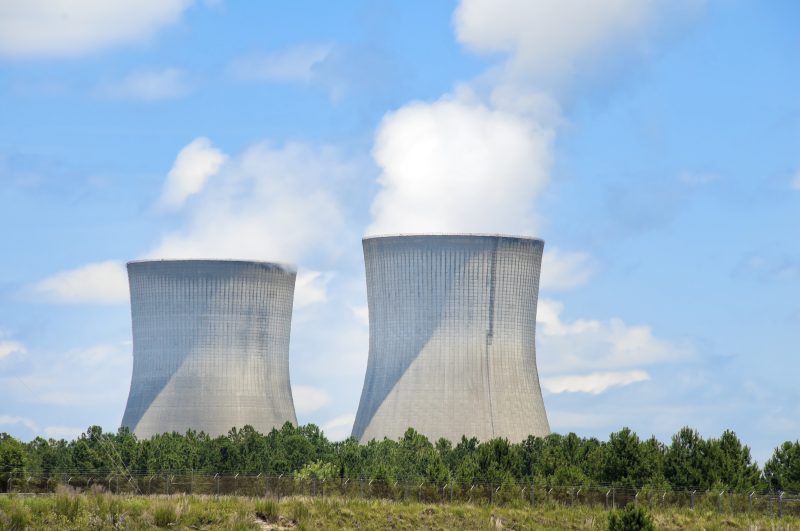China's Nuclear Energy Surge: Government Approves 10 New Reactors

Table of Contents
The Significance of the 10 New Reactor Approvals
The approval of ten new nuclear reactors represents a substantial investment in China's nuclear energy infrastructure and a bold statement about the country's commitment to clean energy. This decision is not merely an incremental increase in capacity; it's a strategic leap forward with far-reaching consequences.
-
Massive Infrastructure Investment: This project signifies a huge financial commitment, boosting domestic industries involved in nuclear power plant construction and related technologies. It represents a significant injection of capital into the Chinese economy, creating jobs and stimulating technological innovation.
-
Accelerated Progress Towards Carbon Neutrality: China's ambitious carbon neutrality goals require a significant reduction in greenhouse gas emissions. Nuclear power, as a low-carbon energy source, plays a vital role in achieving this target. The 10 new reactors substantially accelerate the timeline for decarbonization.
-
Global Leadership in Nuclear Power Technology: This expansion solidifies China's position as a major player in the global nuclear energy arena. It showcases China's advancements in reactor design, construction, and safety protocols, potentially attracting international collaboration and investment.
-
Key Benefits:
- Increased energy independence for China, reducing reliance on imported fossil fuels.
- Creation of numerous high-skilled jobs across the supply chain, from engineering and construction to operation and maintenance.
- Potential for significant technological advancements in reactor design, safety features, and waste management.
China's Growing Nuclear Power Capacity and its Global Impact
China's current nuclear power capacity is already substantial, but this expansion will propel it to new heights. The addition of these reactors, primarily using advanced designs like the HPR1000 and CAP1400, will dramatically increase the nation's electricity generation capacity from nuclear sources.
-
Projected Growth and Global Standing: The projected growth in China's nuclear power capacity will significantly impact global energy markets. It positions China to compete with established nuclear powerhouses like the US and France, leading to a more competitive and dynamic global energy landscape.
-
Reactor Types and Technological Advancements: The deployment of advanced reactor designs, such as the HPR1000 and CAP1400, highlights China's commitment to deploying safer and more efficient nuclear technology. These reactors incorporate advanced safety features and improved efficiency compared to older designs.
-
Global Implications:
- Increased competition in the global nuclear energy market, potentially driving down costs and improving technology.
- Opportunities for technology transfer and international collaborations on reactor design and safety.
- Potential impact on uranium prices and global supply chains, as demand for uranium increases.
Addressing Concerns Surrounding Nuclear Safety and Waste Management
The expansion of China's nuclear power program necessitates a robust approach to nuclear safety and waste management. Public concerns about these issues need to be addressed proactively and transparently.
-
Stringent Safety Regulations: China is implementing stringent safety regulations and oversight mechanisms to ensure the safe operation of its nuclear power plants. These regulations align with international best practices and incorporate lessons learned from past incidents.
-
Waste Management Strategies: The long-term management of nuclear waste is a key challenge. China is investing in research and development of advanced waste management technologies, including long-term storage solutions and potential reprocessing techniques.
-
Public Engagement and Transparency: Open communication and public engagement are crucial to address public concerns. China is actively promoting transparency in its nuclear program, sharing information about safety protocols and waste management strategies.
-
Addressing Key Concerns:
- New reactors incorporate multiple passive safety systems, reducing reliance on active components in emergency scenarios.
- Long-term storage solutions, such as deep geological repositories, are being explored and developed.
- Public outreach programs and educational initiatives aim to increase public understanding and address misconceptions about nuclear energy.
Technological Advancements in China's Nuclear Sector
China's nuclear sector is experiencing a period of rapid technological advancement, driving innovation in reactor design, fuel efficiency, and waste management.
-
Reactor Design Innovations: Advancements in reactor design focus on improving efficiency, safety, and reducing the overall cost of electricity generation. This includes developments in passive safety systems and modular reactor designs.
-
Nuclear Fuel and Waste Management: Research into advanced nuclear fuels and innovative waste management technologies aims to minimize waste volume and improve the long-term sustainability of nuclear power.
-
Fusion Power Potential: While still in its early stages, China is actively involved in research and development of nuclear fusion technology, which holds the potential to provide a virtually limitless source of clean energy in the future.
-
Technological Progress:
- Development of advanced materials for reactor components, increasing their lifespan and durability.
- Improvements in fuel efficiency, reducing the amount of uranium needed for electricity generation.
- International collaborations are accelerating technological innovation and knowledge sharing.
Conclusion
China's approval of 10 new nuclear reactors signifies a major step forward in its ambitious energy strategy. This expansion will not only bolster the country's energy independence and economic growth but also significantly influence global energy markets and the future of nuclear technology. Addressing safety and waste management concerns responsibly remains crucial for the continued success and public acceptance of this vital energy source. The advancements in reactor design and efficiency, coupled with increased investment, position China as a key player in shaping the future of nuclear power globally.
Call to Action: Stay informed about the latest developments in China's nuclear energy sector and the global implications of this significant expansion. Follow our updates on China's nuclear energy advancements and learn more about the future of this vital energy source. Understanding China's nuclear energy strategy is crucial for comprehending the future of global energy.

Featured Posts
-
 Porsche Cayenne Ev 2026 Leaked Spy Shots And What They Mean
Apr 29, 2025
Porsche Cayenne Ev 2026 Leaked Spy Shots And What They Mean
Apr 29, 2025 -
 Louisville Battered By Severe Weather Snow Tornadoes And Devastating Floods In 2025
Apr 29, 2025
Louisville Battered By Severe Weather Snow Tornadoes And Devastating Floods In 2025
Apr 29, 2025 -
 Past Tragedy Weighs Heavy As Louisville Residents Shelter In Place
Apr 29, 2025
Past Tragedy Weighs Heavy As Louisville Residents Shelter In Place
Apr 29, 2025 -
 How To Buy Capital Summertime Ball 2025 Tickets Now
Apr 29, 2025
How To Buy Capital Summertime Ball 2025 Tickets Now
Apr 29, 2025 -
 February 20 2025 Ideas For A Happy Day
Apr 29, 2025
February 20 2025 Ideas For A Happy Day
Apr 29, 2025
